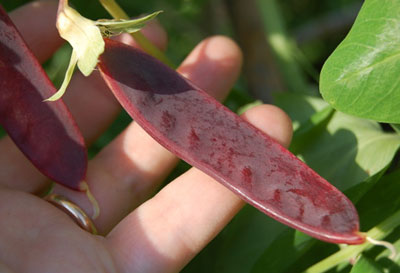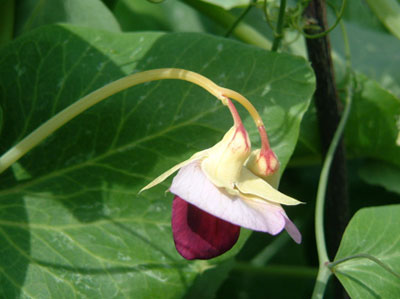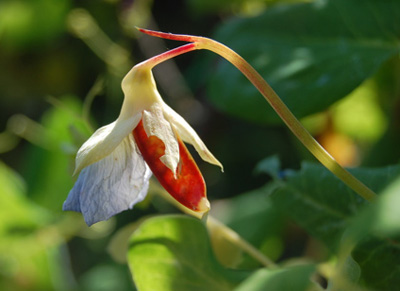Post by Rebsie on Oct 28, 2008 6:23:24 GMT -5
Well, it seemed a shame for the new Fabaceae forum to have nothing in it yet, so I'll take this opportunity to show off my red podded peas. ;D

Like a lot of exciting phenotypes, this pea was created entirely by accident. I was actually trying to breed a purple-podded mangetout (snow pea) for Real Seeds, an ethical seed company in the UK, and this red-podder showed up among the F2 plants. The original cross was Golden Sweet, a yellow podded heirloom with edible pods, and Carruthers' Purple Podded, another heirloom which I've found in my trials of purple podded peas to be the best tasting purple, although it doesn't have edible pods.
The reason for the red colour is very simple. Normal purple podded peas actually have green pods, and the purple is just laid over the top. All that's happened here is that the purple has been overlaid on a yellow pod, giving a red appearance. (So theoretically it should be possible to make red pods from any cross between a yellow and a purple.)

The baby pods start off yellow and the red develops over a few days. They stay red (stunningly gorgeous when the sun shines through them) until late maturity, when they darken to burgundy and then purple. The plant also has a lot of beautiful colouring, including two-tone pink and yellow tendrils!
In this particular batch of F2 plants I only had one really deep true red. There were a few others with red colouring, but only in peachy blushes like the one below. But some of these are worth pursuing in their own right.

I grew out a small sample of F3 plants from the true red and they segregated into mostly reds with a few yellows, so stabilising this deep colour should be a simple enough job.
What may take longer is getting the flavour right. The true red doesn't have edible pods, unfortunately. But it does have edible pods in its parentage (two recessive genes needed for it) so I'm hoping it might show up when I grow more F2 and F3 plants next year. I'm also going to try crossing the true red with one of its semi-red siblings which already has sweet edible pods.
At the moment I have barely a dozen seeds of the true red so I'll have to keep this project to myself for the next season, but as soon as I have enough seed to share I'll be happy to send it out.

Like a lot of exciting phenotypes, this pea was created entirely by accident. I was actually trying to breed a purple-podded mangetout (snow pea) for Real Seeds, an ethical seed company in the UK, and this red-podder showed up among the F2 plants. The original cross was Golden Sweet, a yellow podded heirloom with edible pods, and Carruthers' Purple Podded, another heirloom which I've found in my trials of purple podded peas to be the best tasting purple, although it doesn't have edible pods.
The reason for the red colour is very simple. Normal purple podded peas actually have green pods, and the purple is just laid over the top. All that's happened here is that the purple has been overlaid on a yellow pod, giving a red appearance. (So theoretically it should be possible to make red pods from any cross between a yellow and a purple.)

The baby pods start off yellow and the red develops over a few days. They stay red (stunningly gorgeous when the sun shines through them) until late maturity, when they darken to burgundy and then purple. The plant also has a lot of beautiful colouring, including two-tone pink and yellow tendrils!
In this particular batch of F2 plants I only had one really deep true red. There were a few others with red colouring, but only in peachy blushes like the one below. But some of these are worth pursuing in their own right.

I grew out a small sample of F3 plants from the true red and they segregated into mostly reds with a few yellows, so stabilising this deep colour should be a simple enough job.
What may take longer is getting the flavour right. The true red doesn't have edible pods, unfortunately. But it does have edible pods in its parentage (two recessive genes needed for it) so I'm hoping it might show up when I grow more F2 and F3 plants next year. I'm also going to try crossing the true red with one of its semi-red siblings which already has sweet edible pods.
At the moment I have barely a dozen seeds of the true red so I'll have to keep this project to myself for the next season, but as soon as I have enough seed to share I'll be happy to send it out.












